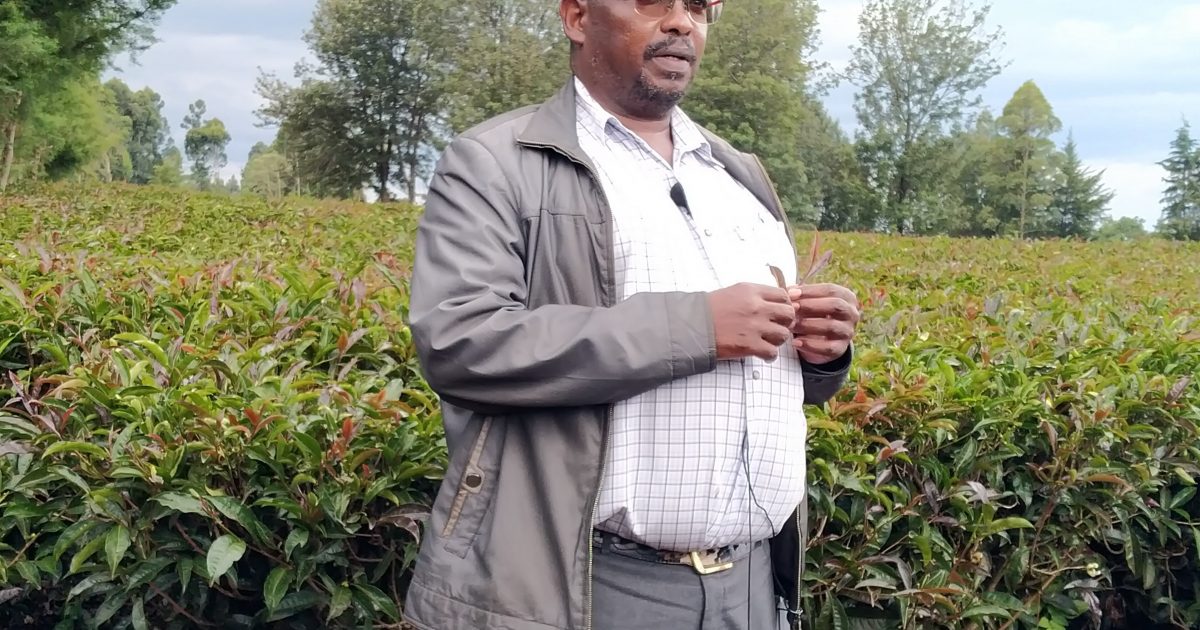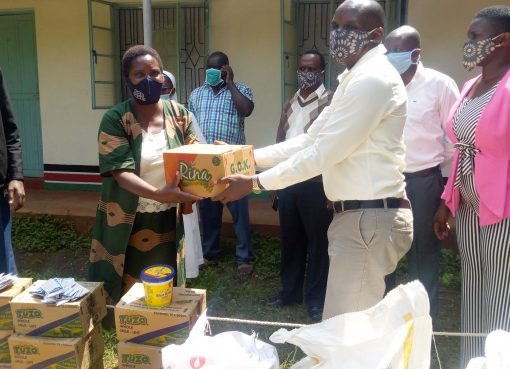Kenya has the highest productivity (production per ha) of tea, number 3 globally after China and India and is the leading exporter of high quality black Crush Tear and Curl (CTC) teas.
The government has now moved after the success and has been encouraging farmers and producers to diversify and embrace other specialty teas that would not only enhance their incomes but also cut on overreliance of the black tea whose prices were relatively low compared to the orthodox teas
The diverse specialty tea lines of purple, green, yellow and white teas have the potential to transform livelihoods and also stimulate competition among producers.
Speaking during a media tour of various Tea farms and Factories, Institute Director, Tea Research Institute (TRI) Samson Kamunya said for sustainability, Kenya has to invest in diversification and value addition on novel tea products like Green, purple, black, oolong orthodox and white teas.
He added that consumers of tea also needed to be encouraged to try the specialty teas for the betterment of their health as the teas have very strong anti-inflammatory effects.
For example, purple tea contains an anthocyanin chemical which has many medicinal properties and is particularly known to be beneficial against cardiovascular diseases.
The anti-oxidants found in purple tea are known to provide anti-cancer benefits, improve vision and aid in cholesterol and blood sugar metabolism.
The government reforms through the Tea Board Directorate requires factories to value add on at least 20 percent of their teas before they are released to the market.
Technical Advisory Services officer from the Tea Board of Kenya James Marete said that the board has been encouraging producers to adopt specialty teas production system that would give them high value product and that can fetch more in world market.
Our current price for CTC black tea is around 2.5 dollar per 1kg while the specialty teas such as purple tea are fetching up to 10 dollars per kg.
“This is a developing market for Kenya. Specialty teas are of high value and since 2016 we have been encouraging farmers to adopt this technology and tap in the world market,” he said adding that there was a big market in Europe and America and some extent China.
Marete noted that specialty is about value and therefore it should be able to give better returns to growers but at the same time, if the middle class were to adopt consumption of specialty teas, it would bring about development of the tea business in the country.
Betty Langat, a director of a few family owned cottage industry in the country, Ernestea, and who are concentrating on specialty teas said they had to undergo a long journey in learning about the orthodox teas, in terms of taste, and how to make it.
“We found it very authentic tea which is gently rolled out and not cut so that the enzymes are not affected and one is able to get the full flavour and the benefits of the tea,” she added.
Ms. Langat however explained that the biggest challenge they have is to get drinkers locally noting that if more and more Kenyans understood the benefits of orthodox teas, Kenya would be able to market it and sell it abroad.
Currently Kenyans only consume 7 percent of its produced tea with annual consumption per capita at 500grams compared to 2kgs per individual yearly in order countries.
Langat noted that the orthodox tea, as a product for the international market, there is a need for people to understand the health benefits of tea such as reducing blood pressure, reducing weight and emphasizing the health benefits of tea and drinking it authentically without milk or sugar.
Bernard Ruto, a farmer from Kericho who supplies his tea to Ernestea factory said quality is needed in the tea he provides and he has realized that plucking tea in rounds has its benefits.
“I pluck my tea three times a month and I have seen high productivity compared to the ones for black CTC variety that I take in other factories. Managing the orthodox tea is also one of the easiest and the returns are huge,” he said.
He explained that Earnestea has been paying farmers Sh28 per kilos of the two leaves and a bud which is the highest compared to any other company. “I have 2000 tea bushes which gives me around 500kgs per month,” said Langat.
The current figures by the TRI show that currently, the hectares under tea is 163,310 for small holder farmers while Estates are at 106,310 bringing a total of 269,430 hectares.
According to FAO, the solution for tea growth is to fast-track action on formulated strategies towards tea products diversification and value addition but this however will need to be guided by tea research generated information and knowledge for success to be realized.
FAO statistics indicate that the growth rate for green and specialty tea production segment from 2011 to 2022 is estimated at 7.2 percent with green tea exports to grow by 5.8 percent per annum
FAO intimates that if tea earnings account for over 60 percent of Kenya’s food import bill, then reduced earnings when it comes to tea could spell doom on food security, a major item in the governments Big4 agenda.
By Wangari Ndirangu




